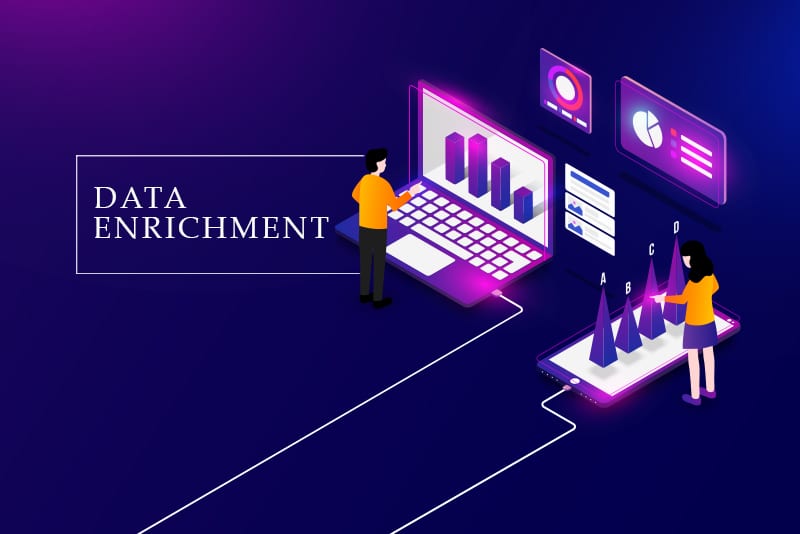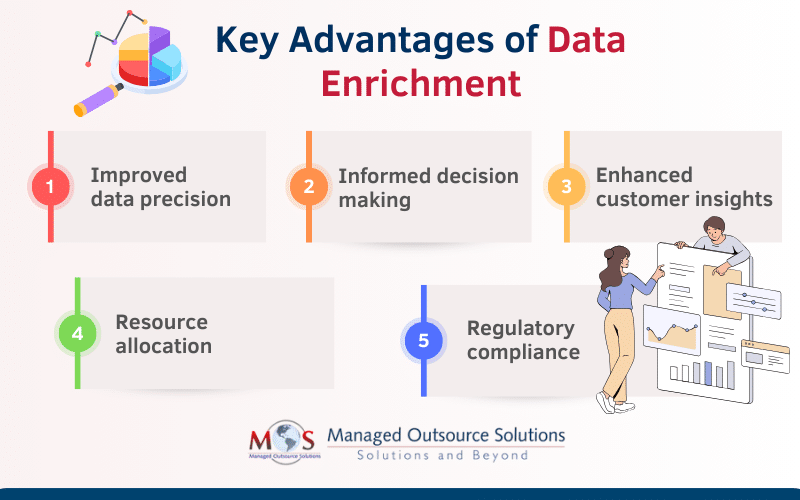The boon of the information age is the availability of a broad array of datasets, collected from diverse sources such as case studies, surveys, and records to generate big data. Organizations use these datasets for valuable insights about company performance, market research, and driving financial growth. It is therefore not an understatement to mention that the surge of large datasets has revolutionized how business operations are conducted in real-world business applications.
However, this rise of information can only be tangible for enterprises with extensive processing, analysis, and presentation of datasets. Taking raw information and transforming it into a business resource is an arduous task, filled with complex and intricate information analytics procedures. Business analysts and data scientists go through several stages of information management activities to produce business intelligence reports used for informed-decision making. One important aspect of this process is data enrichment, a data transformation process used to harness the full potential of information for businesses.
As business leaders are occupied with core corporate undertakings and lead their team forward with passion and motivation, outsourcing this specialized task to third-party service providers such as data cleansing services is a practical option to foster sustainable financial growth of their companies.
What Is Data Enrichment?
Data enrichment refers to the process of enhancing the accuracy, utility, and richness of a raw database by merging it with supplementary information from internal and external sources. It is a fundamental aspect of business analytics to improve the quality, completeness, and usefulness of databases. This process involves augmenting existing datasets with additional and relevant information to refine and sharpen the original datasets.
It empowers businesses with better understanding of their customers, functions, and market opportunities. It is a comprehensive, unified asset crucial to driving strategic planning and delivering tailored solutions for achieving desired commercial outcomes. The key components of this process include verification, supplementation, and integration. Although closely related to data enhancement and data aggregation processes, each one serves a distinct purpose.
Here are the various types of data enrichment processes that companies can make use of:
- Socio-demographic
- Behavioral
- Firmographic
- Geographic
- Technographic
- Psychographic
Techniques of Data Enrichment
Executing this process involves several systematic techniques and steps to enhance the quality and contextuality of the database.
Here are the right actionable techniques:
- Identify source of information: There are two types of data sources that contribute to business information, which are internal and external sources. It is crucial to identify and categorize the source as they come in different formats and types. Understanding the source is important to clean and remove errors from the datasets.
- Validation: The goal of this step is to determine the accuracy and quality of the datasets. Before applying information enrichment processes, it is important to validate the integrity of the datasets by removing duplicates, detecting errors, and addressing formatting issues.
- Consolidation: This is the process of combining and storing multiple database sources into a single, unified repository. For example, brands can consolidate information from sources such as online sales, in-store sales, and production rates to optimize inventory and stock management.
- Integration: An essential step of dataset governance involves integrating the cleansed datasets with the original database of the organization into a coherent format suitable for strategic business operations. It ensures consistency, continuity, and compatibility across all datasets.
- Matching and deduplication: Post-integration, issues such as duplicate cases are common occurrences and in order to refine it, matching and deduplication processes are conducted. Matching ensures that no two same entities in the datasets exist by identifying and merging the same records within a dataset, and deduplication eliminates duplicate records.
Key Benefits of Data Enrichment
Enriched data offers several advantages for businesses to enhance operational efficiency, design marketing campaigns, and realize organizational objectives:
- Improved data precision: It takes raw, unfiltered information and transforms it into actionable business insights by enhancing the context, reliability, and depth of the information.
- Informed decision-making: It enables enterprises to take an evidence-based approach towards decision-making by providing analytical evidence of the enriched data that helps to realize specific needs of your business. This allows companies to refine their business strategies for accomplishing goals such as better lead generation, improved conversion rates, and boosted sales.
- Enhanced customer insights: A clearer, deeper understanding of the customer at a granular level is crucial for delivering targeted, personalized marketing campaigns by segmenting them to create ads that resonate with each target group and increase user engagement.
- Resource allocation: Organizations can utilize their resources better with effective allocation to maximize the full potential and avoid wasteful spending of the resources. Enriched information therefore eliminates misallocation of resources which is beneficial to reduce heavy expenses and detect costly errors.
- Regulatory compliance: The surge of technology has affected the requirement of information to be used legally and ethically by businesses with stringent data compliance laws and regulations. Enriched information can minimize legal and ethical implications by ensuring that only safe and updated information is used for business purposes.
Best Practices for Data Enrichment
Organizations can harness the potential and power of enriched information by following the given best practices:
- Set definite goals: Companies need to realize their intent of using enriched information by setting clear and specific business goals with the SMART method to guide business strategy.
- Ensure source quality: An important foundational step is to ensure the quality of information and its sources, as all the source materials are not equally valuable.
- Automation: Leverage technology with the latest data enrichment tools to simplify processes, reduce manual work, and minimize human errors.
- Ensure compliance: Companies need to strictly adhere to the legal and ethical regulations when handling information to protect user privacy and avoid legal repercussions.
- Monitor results: Update data management strategies as information can quickly become outdated, and keep track of its performance with KPI metrics such as conversion rate, churn rate, and customer retention rate.
Data Enrichment ls an Ongoing Process
Data enrichment empowers businesses to gain deeper insights, enhance customer experiences, and make informed decisions. They also provide more accurate audience segmentation for digital markets to tailor customized ad campaigns according to buyer’s interests and nurture client loyalty. As the market volatility can have a significant impact on a company’s bottom line, a continuous data enrichment process is crucial for streamlined business operations. By leveraging enriched information, businesses can drive targeting, enhance personalization, and ultimately boost competitive advantage and financial growth. To realize all the mentioned goals and promote profitability, enterprises can opt for the services of reputable data cleansing companies.





